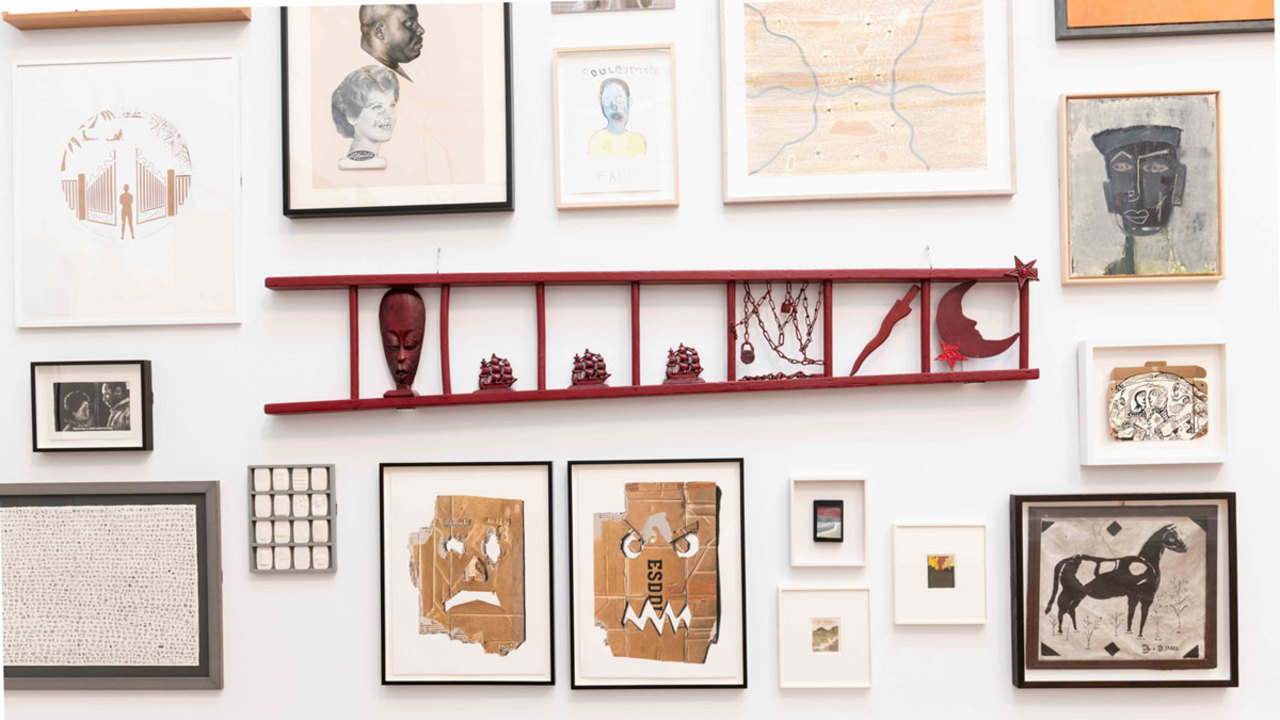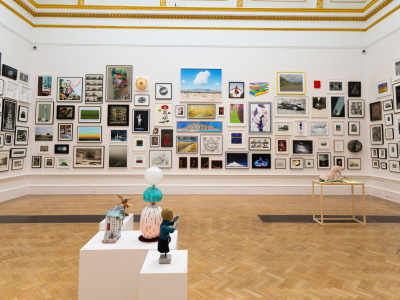
Seven tips for starting your own art collection
By Katherine Oliver
Published on 31 May 2022
There are over 1,000 works in the Summer Exhibition – and most of them are for sale. So how do you choose? Here are our top tips for buying your first pieces of original art.
An earlier version of this article was published in 2016.
The art market can seem like a daunting world, reserved for those with millions to spend on artworks by the biggest names in the business. But don’t be intimidated: everyone can enjoy buying and owning art in an affordable way. Whether it’s a painting, photographic print, monotype or etching, the key is to choose something you love and buy with confidence. Katherine Oliver, consultant and ex-Curator at the RA, shares some tips on starting, building and displaying a collection.
1. Trust your instinct
Buy something for the simple reason that you love looking at it. As Norman Ackroyd RA said about collecting, "When it goes on the wall, can you live with it? Sometimes of course the question is, could you live without it – and if it’s no, that’s when you really go for something."
Be discerning and brave. If you’re looking for something in a particular style, it’s better to settle on a good example of this type of work from an exciting emerging artist than to scrimp and save to buy something second-rate from someone better-known. There is great satisfaction in supporting the next generation of artists.
2. Follow your favourite artists on Instagram
Instagram is becoming an increasingly important forum for artists, galleries and collectors, with a growing number of buyers purchasing works found through the platform. Follow contemporary commercial galleries to discover emerging artists and art fairs for key events in the arts calendar, from major fairs like Frieze to smaller events such as the London Original Print Fair. Speaking of prints...
3. Original prints can be an affordable option
Often major artists will produce printed editions in smaller, affordable batches, sold through non-profit making organisations like the RA, Aperture or the Whitechapel Gallery, so keep an eye out for collaborations and other limited-edition print projects they're doing. Alongside our year-round Art Sales collections featuring many limited edition prints, the RA collaborates with Own Art – a government scheme which enables people to buy artworks with the help of an interest-free loan. On our Summer Exhibition Explorer, you can purchase both prints and framed editions from this year's exhibiting artists.
4. Get to know the graduates
Keep an eye on graduates from the major art schools (including The Royal College of Art, Slade School of Fine Art, Camberwell College, Central Saint Martins and the RA Schools). In two or three years they could be represented by a commercial gallery and their pieces may rocket in value, so buying before that point is a savvy move. Go to graduate shows, meet artists and talk to them about their work — you could even follow up with a studio visit. By building relationships with artists, you become their personal client and will get to hear about new works first.
5. Get it framed right
Always remember that simple is best. Focus on the artwork and not on the frame. A mount should be kept simple and works on paper should match the paper colour. We can recommend a very good framer through Art Sales at the RA.
6. Move it around at home
If you hang an artwork at home and it doesn’t feel right, move it. Try putting it in different places, and see if it strikes an interesting dialogue with other works on your wall. Smaller artworks often work well near light switches, or hung low over a small piece of furniture like a bedside table. Grouping works together can be really effective. Test out a group of frames by arranging them on the floor or a table top. If you’re feeling pro, use masking tape to mark out your very own tightly packed salon hang on the walls. (More good tips on this in this feature from Artspace).
7. If you don’t love it, don’t despair
Your tastes will change over time, and that's fine – you can fall in love with something twice. If you’re not happy with something on the wall, don’t be afraid to shelve it for a while. You can hang it again a few years later, perhaps in a different place in your home.
Here's some display inspiration from inside the home of designer (and art collector) Cath Kidston...
Related articles
-

Video: two-minute tour of the Summer Exhibition 2023
24 July 2023
-

How to make a Summer Exhibition in 10 easy steps
12 June 2023
